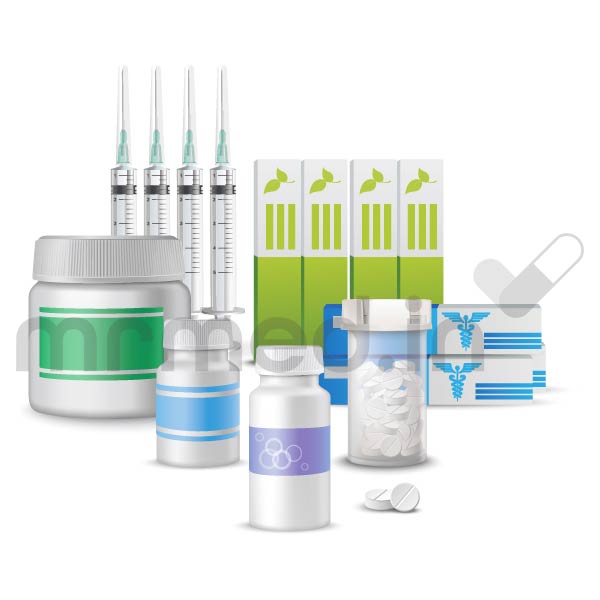All Substitutes
Loading...
Disclaimer
Did you find this information helpful?



Elores 1.5gm Injection
Prescription Required
Salt Composition : Ceftriaxone,disodium Edetate,sulbactam
Manufacturer : CIPLA LTD
Origin of Medicine : India
1 Vial(s)
Introduction to Elores 1.5gm Injection
Elores 1.5gm Injection contains Ceftriaxone, Disodium edetate, and Sulbactam as its active ingredients. This combination antibiotic is used to treat a wide range of serious bacterial infections, including those affecting the respiratory, urinary, and soft tissues. The combination also plays a key role in treating intra-abdominal infections, sepsis, and infections caused by beta-lactamase-producing bacteria.
Ceftriaxone works by inhibiting bacterial cell wall synthesis, while Sulbactam protects Ceftriaxone from beta-lactamase enzymes that would normally degrade it. Disodium edetate enhances the activity of Ceftriaxone by stabilising the antibiotic, making it more effective against resistant bacterial strains.
Elores 1.5gm Injection is typically prescribed to adult patients with severe bacterial infections. It is essential to follow the prescribed dosage and administration instructions carefully. The medication is administered via injection by a healthcare professional, ensuring proper dosage and monitoring throughout the treatment course.
Do not use Elores 1.5gm Injection if you are allergic to Ceftriaxone, Sulbactam, Disodium edetate, or any other ingredients of the product. Before starting treatment, inform your doctor if you have a history of kidney problems, gastrointestinal issues, or blood disorders. Special caution is required when treating neonates or patients with high bilirubin levels due to the potential risk of bilirubin encephalopathy.
Uses of Elores 1.5gm Injection
Elores 1.5gm Injection is used in the treatment of the following:
- Respiratory infections
- Urinary tract infections
- Intra-abdominal infections
- Sepsis
- Infections caused by beta-lactamase-producing bacteria
- Effective against resistant bacterial strains
Therapeutic Effects of Elores 1.5gm Injection
The Elores 1.5gm Injection works by inhibiting the synthesis of bacterial cell walls via Ceftriaxone, while Sulbactam prevents the breakdown of Ceftriaxone by beta-lactamase enzymes. Disodium edetate enhances the antibiotic's effectiveness by binding to metal ions, which helps stabilise and increase its potency.
Interaction of Elores 1.5gm Injection with other drugs
It is important to inform your healthcare professional about all the medications you are taking, including prescription drugs, over-the-counter medications, nutritional supplements, and herbal products. Some medications may interact with Elores 1.5gm Injection, potentially affecting their effectiveness or causing side effects.
More Information about Elores 1.5gm Injection
- Keep out of reach of children and pets.
- Store in the original packaging to protect from moisture.
- Avoid direct sunlight
- Store Elores 1.5gm Injection at room temperature below 30°C.
How to consume Elores 1.5gm Injection
The Elores 1.5gm Injection is given either intravenously (IV) or intramuscularly (IM). The dosage is adjusted by healthcare providers based on the type and severity of the infection, as well as individual patient factors. The medication is reconstituted with an appropriate diluent, and the IV infusion is administered over 30 minutes to 1 hour to minimise irritation.
Safety Advices for Elores 1.5gm Injection
Pregnancy
It is unknown if Elores 1.5gm Injection is safe to take during pregnancy. Please consult your healthcare provider if you have any concerns.
Breast Feeding
It is unknown if Elores 1.5gm Injection is safe to take during breastfeeding. Please consult your healthcare provider if you have any concerns.

Lungs
If you have any pre-existing lung conditions, discuss them with your doctor before starting treatment with Elores 1.5gm Injection.

Liver
If you have any pre-existing lung conditions, discuss them with your doctor before starting treatment with Elores 1.5gm Injection.
Alcohol
It is unknown whether it is safe to consume alcohol after receiving a shot of Elores 1.5gm Injection. Please consult your healthcare provider if you have any concerns.
Driving
It is generally safe to drive after receiving a shot of Elores 1.5gm Injection. However, if you experience any side effects like dizziness or fatigue, it's best to avoid driving.
Side Effects of Elores 1.5gm Injection
Side effects are unwanted symptoms caused by medicines. Although all drugs can cause side effects, not everyone experiences them.
Common side effects of Elores 1.5gm Injection are
- Diarrhoea
- Pain or swelling at the injection site
- Nausea or vomiting
- Rash
- Fever
- Headache
Serious side effects of Elores 1.5gm Injection are:
- Seizures (especially in patients with renal impairment)
- Blood disorders (e.g., low white blood cell count, anaemia)
- Liver or kidney dysfunction (e.g., jaundice, dark urine)
- Severe diarrhoea (Clostridium difficile-associated diarrhoea)
- Allergic reactions (e.g., difficulty breathing, swelling of face or throat)
Word of Advice
When using Elores 1.5gm Injection, follow the prescribed dosage and complete the full course of treatment. Monitor for allergic reactions, gastrointestinal issues, and blood disorders, especially in patients with renal impairment. Avoid use in neonates with high bilirubin levels and do not mix with calcium-containing solutions. Always inform your healthcare provider about other medications you're taking to prevent harmful interactions with Elores 1.5gm Injection.
FAQs
Q 1. What is Elores 1.5gm Injection used for?
Elores 1.5gm Injection is used to treat a range of serious bacterial infections, including those affecting the respiratory, urinary, and intra-abdominal areas. It also helps manage infections caused by beta-lactamase-producing bacteria.
Q 2. How many days do you take Elores 1.5gm Injection?
The duration of treatment with Elores 1.5gm Injection typically ranges from 4 to 14 days, depending on the infection and individual response. Follow your healthcare provider's instructions for the exact duration.
Q 3. What is the best time to take Elores 1.5gm Injection?
Elores 1.5gm Injection is typically administered in a healthcare setting via intravenous (IV) or intramuscular (IM) injection. The timing of administration depends on the specific infection being treated and the prescribed dosing schedule. It is important to follow your healthcare provider's instructions regarding when and how to take the medication, ensuring consistent intervals between doses for optimal effectiveness.
Q 4. Who should avoid Elores 1.5gm Injection?
People who are allergic to beta-lactam antibiotics should avoid Elores 1.5gm Injection. It is also not recommended for neonates with high bilirubin levels or those with severe renal impairment without proper dosage adjustment.
Q 5. Is Elores 1.5gm Injection safe for children?
Elores 1.5gm Injection can be used in children, but caution is necessary, especially in neonates. It should be avoided in newborns with high bilirubin levels due to the risk of bilirubin encephalopathy. Healthcare providers should adjust the dosage based on the child's age and renal function.
Fact Box of Elores 1.5gm Injection
| Molecule name: Ceftriaxone, Disodium edetate and Sulbactam | Therapeutic class: Antibiotic/Antibacterial combination |
| Pharmacological class: Beta-lactam antibiotic combination | Indications: 1. Respiratory infections 2. Urinary tract infections 3. Intra-abdominal infections 4. Sepsis 5. Infections caused by 6. beta-lactamase-producing bacteria 7. Effective against resistant bacterial strains |
References
1. Patil UN, Jambulingappa KL. A Combination Strategy of Ceftriaxone, Sulbactam and Disodium Edetate for the Treatment of Multi-Drug Resistant (MDR) Septicaemia: A Retrospective, Observational Study in Indian Tertiary Care Hospital. https://pmc.ncbi.nlm.nih.gov/articles/PMC4668432/
2. Gupta S, Kumar M, Shergill SPS, Tandel K. Evaluation of ceftriaxone-sulbactam-disodium edetate adjuvant combination against multi-drug resistant Gram-negative organisms. https://pmc.ncbi.nlm.nih.gov/articles/PMC7736688/
3. Richards DM, Heel RC, Brogden RN, Speight TM, Avery GS. Ceftriaxone. A review of its antibacterial activity, pharmacological properties and therapeutic use. https://pubmed.ncbi.nlm.nih.gov/6329638/
Disclaimer
MrMed’s primary intention is to ensure that its consumers get accurate and trustworthy information that is reviewed by experts. The contents of this website are for informational purposes only. They are not intended to be a substitute for professional medical advice, diagnosis, or treatment. Please seek the advice of your doctor and discuss all your queries related to any disease or medicine. Do not disregard professional medical advice or delay in seeking it because of something you have read on MrMed. Our mission is to support, not replace, the doctor-patient relationship.